Understanding reservoirs, whether they contain water, hydrocarbons or carbon dioxide (CO2), is vital for interpreting the movements of fluids within them. Reservoirs are controlled by the grains they are made up of, which is why sedimentology is key.
By the nature of the subsurface being ‘under the surface’, any evaluations are based on a very small sample size when compared with the overall volume of interest. The skill in taking the data that are available and deriving a three-dimensional understanding of the subsurface geology is where Merlin Energy Resources can support your workflows.
UNDERSTANDING DEPOSITIONAL ENVIRONMENTS
By understanding the source of sediments and their environment of deposition, a geological model can be established which allows detailed modelling of fluids, including CO2, at injection sites.
Do you have a beach sand or a river bar deposit? What does this mean for the connectivity of your fluid pathways?
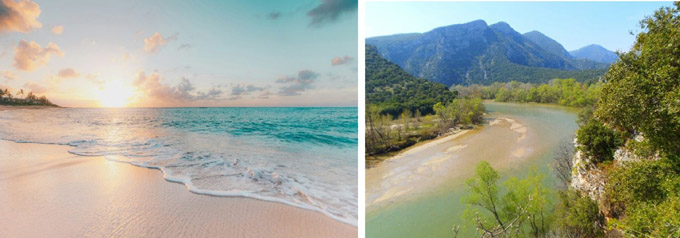
Beach (left) and river (right) deposits
As you can see from the images above, the sand on the beach is significantly more laterally extensive than the river bar deposit. Even within a single depositional unit, subtle variations can lead to initially unexpected results. For example, a project Merlin supported involving the tight gas deposits of the Southern North Sea identified that fluid movement through the tight sandstone units was greater than expected. Detailed investigation of the core showed that slightly coarser-grained slip-slope laminae were potentially providing higher permeability pathways. Upscaling of this effect was applied to the geological modelling and a better fit to observed fluid movement through the sediments was obtained.
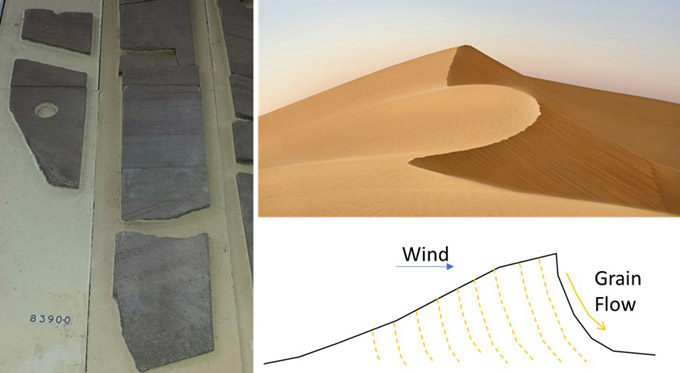
Understanding depositional environments can help model fluid movements in reservoirs
THE IMPORTANCE OF HETEROGENEITY IN CO2 INJECTION
Investigative work on CO2 injection modelling has highlighted the importance of grain size disparity between layers. Increasing grain size disparity has been shown to slow the transit time of injected CO2, resulting in more efficient CO2 plume within the overall reservoir unit. Sedimentological heterogeneity is therefore considered beneficial in carbon storage settings, assuming there is no compartmentalisation. The figure below shows how grain size baffles between reservoir layers increases overall storage efficacy:
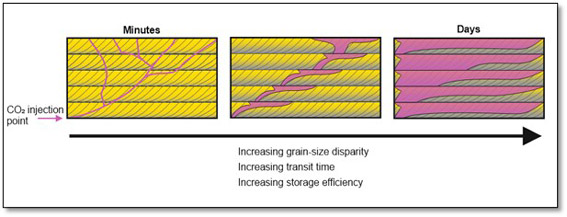
Increasing reservoir heterogeneity slows CO2 transit time. Modified after Meckel et al., 2019
In other words, any baffle is a good baffle, and a ‘stock-tank’ of sand is not necessarily the best reservoir when considering CCS sites. Developing an understanding of likely geo-body emplacement in the subsurface via sedimentological modelling allows the pathway of the sequestered CO2 to be predicted. Injection studies which model these flow patterns are key to understanding the movement of CO2 through the reservoir, and consequently, the expected storage volumes and pressure implications.
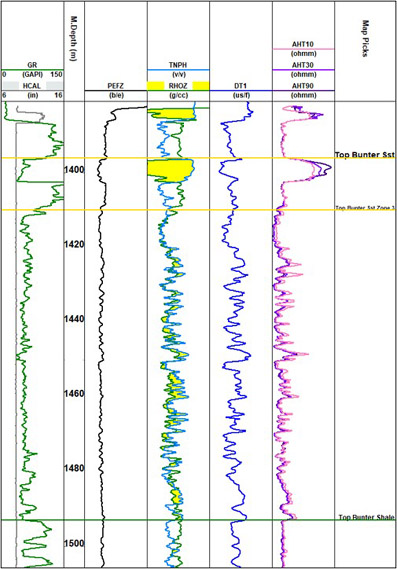
43/13a-5 (Esmond) well log
The Bunter Sandstone of the North Sea has been identified as a potential target for CO2 sequestration. Deposition during the Triassic period in the Southern North Sea was fluvial, resulting in both vertical and lateral heterogeneity. These heterogeneities are clearly seen on the log data for the 43/13a-5 Esmond Well (see image to the left). A prominent sawtooth pattern through the Bunter Zone 3 to Top Bunter Shale interval can be picked out in track 4 of the figure by the yellow “sandstone” infill colouring.
Merlin has significant experience from past evaluations of the Bunter and takes a holistic approach to the evaluation of this interval. By combining all available data such as drilling, core, stratigraphic and pressure data and rock physics outputs (see next week’s blog), a more robust interpretation can be made of the vertical and lateral heterogeneities within the sandstone units. Once a clear understanding of the geological setting is established, this can be incorporated into a comprehensive geological model representing the interconnectivity of the storage unit.
WHAT ABOUT AT THE PORE SCALE?
An understanding of the pore-scale sedimentology of a reservoir rock is equally important in CCS projects. Pore-scale characteristics can change dramatically with increasing depth or laterally across the depositional environment. This means observed characteristics in one well penetration will not necessarily translate to a location a few kilometres away.
For example, the In Salah CCS project in Algeria has experienced injectivity issues. Pore space characterisation of samples from the In Salah storage unit show some primary porosity is preserved by chlorite coatings around the sand grains, contrasted against naturally occurring fractures infilled with Fe-carbonate cement.
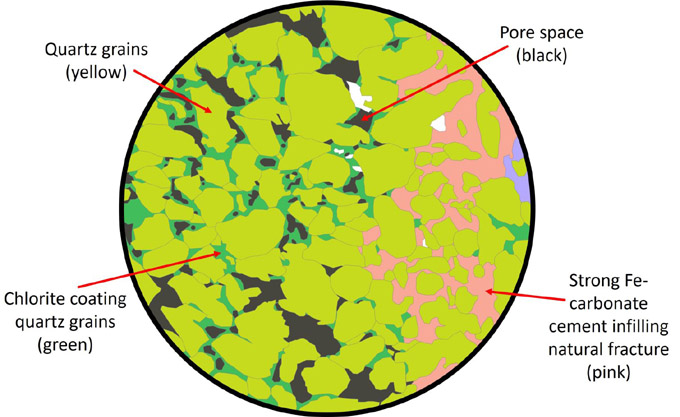
X-ray elemental analysis Krechba Storage Unit. After Ringrose et al. 2011
At In Salah, the distribution of the chlorite grain coatings proved integral to the mobility of the injected CO2, and the carbonate cement was found to be similar in composition to that which is formed after injected CO2 mineralises. This further reinforced the concept of self-sealing CCS sites over long periods of time, via geochemical porosity reduction.
TAKE HOMES
We have discussed how sedimentology is a key factor in screening for and risking potential reservoirs for carbon storage sites. Having a good understanding of the environment of deposition, heterogeneity within the reservoir and pore-scale sedimentology is key to understanding how injected CO2 will behave. It is important to make accurate geological models of the fluid pathways to de-risk potential storage units and ensure that the CO2 we inject will be stored indefinitely.
KeyFacts Energy Industry Directory: Merlin Energy Resources l KeyFacts Energy: Carbon Capture news
 KEYFACT Energy
KEYFACT Energy